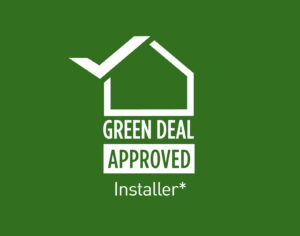External Wall Insulation (EWI) has gained significant traction in the United Kingdom as a sustainable and energy-efficient solution for improving the thermal performance of buildings. With the increasing emphasis on reducing energy consumption and carbon emissions, EWI offers an effective method of enhancing energy efficiency, reducing heat loss, and lowering energy bills.
Let us provide you with an overview of EWI in the UK, exploring its benefits, different systems available, installation process, government grants and incentives, maintenance considerations, successful case studies, and potential challenges. By delving into these aspects, you will gain valuable insights into the significance and practicality of external wall insulation in the UK context with NXTGEN Futures.
NXTGEN Futures have an experienced, and dedicated team that specialise in retrofit and installing External Wall Insulation systems under the PAS2030 regulations to ensure that all jobs meet the necessary standards.
As per the regulations NXTGEN Futures takes a fabric first approach and as such pride ourselves on our insulating works. We have in-house staff trained at level 2, 3 and 5 so far so we have a deeper understanding of retrofit.
Our Accreditations







1. Introduction to External Wall Insulation in the UK
Understanding the Importance of Energy Efficiency
Picture this: you’re curled up on the couch, cozy in your favorite blanket, sipping a hot cup of tea. Outside, the wind is howling, and the rain is pounding against the windows. You’re feeling snug as a bug in a rug, until you notice a chill seeping through the walls. Suddenly, your perfect moment is ruined. Sound familiar?
In the UK, with its unpredictable weather, energy efficiency is a hot topic. We all want to keep our homes warm and comfortable, while also being mindful of our energy consumption. This is where external wall insulation comes to the rescue.
Overview of External Wall Insulation
External wall insulation, as the name suggests, involves insulating the external walls of a building. It acts as a protective layer, preventing heat loss and improving the overall energy efficiency of your home. It’s like giving your walls a cozy sweater to wear, keeping the cold air out and the warm air in.
But external wall insulation does more than just save you money on your energy bills. It also enhances thermal comfort and reduces carbon emissions. So, not only will you feel toasty during those winter months, but you’ll also be doing your part for the environment. It’s a win-win situation!
2. Benefits of External Wall Insulation
Improved Energy Efficiency
Let’s face it: nobody likes wasting money. With external wall insulation, you can wave goodbye to those sky-high heating bills. By preventing heat from escaping through the walls, your home becomes more energy-efficient, meaning you won’t need to crank up the thermostat or pile on extra layers to stay warm. It’s like having your own personal money-saving superhero.
Reduced Heat Loss and Energy Bills
Say goodbye to those pesky drafts and chilly corners of your home. External wall insulation forms a protective barrier that stops heat from escaping, keeping your home toasty and comfortable all year round. No more shivering in your own living room!
And the best part? With less heat escaping, your energy bills will shrink faster than you can say “savings.” Who doesn’t love saving money while staying cozy? It’s like winning the lottery, but for your heating budget.
Enhanced Thermal Comfort
Remember that perfect moment on the couch we mentioned earlier? Well, with external wall insulation, you can experience that snug feeling every day. By improving thermal comfort, your home will feel warmer and more inviting. No more tiptoeing on cold floors or wrapping yourself in multiple blankets to combat the chill. It’s like turning your home into a cozy retreat, complete with fluffy socks and hot chocolate.
3. Types of External Wall Insulation Systems
Render Systems
When it comes to dressing up your walls, render systems are a popular option. These involve applying a layer of plaster-like material over the insulation boards, giving your home a fresh and clean look. With a variety of colors and finishes available, you can choose the perfect style to suit your taste. It’s like giving your walls a fashionable makeover.
Cladding Systems
For those looking to add a bit more personality to their walls, cladding systems are the way to go. These involve attaching panels or boards to the outside of your home, creating a stylish and modern façade. Whether you prefer the classic look of wooden cladding or the sleekness of metal panels, the options are endless. It’s like dressing your walls in the latest trends.
Insulated Render Systems
Why settle for one when you can have the best of both worlds? Insulated render systems combine the benefits of both render and insulation, creating a seamless and efficient solution. These systems provide both thermal insulation and a decorative finish, ensuring your home stays cozy and aesthetically pleasing. It’s like getting a two-in-one deal.
4. The Process of External Wall Insulation Installation
Initial Evaluation and Survey
Before the installation process begins, a thorough evaluation and survey of your home are conducted. This helps determine the most suitable external wall insulation system for your property and ensures any existing issues are identified and addressed. It’s like getting a check-up before starting a new fitness regimen.
Preparation of External Wall Surfaces
To ensure a smooth and durable installation, the external wall surfaces need to be adequately prepared. This typically involves cleaning the walls, repairing any damages, and applying a primer or basecoat. It’s like getting your walls ready for their makeover.
Installation of Insulation Boards
Once the walls are prepped, the insulation boards are installed. These boards serve as the key players in preventing heat loss and improving energy efficiency. They are securely fixed to the walls, creating a solid layer of insulation. It’s like building a fortress to keep the cold at bay.
Application of Render or Cladding
The final step is giving your external wall insulation system its finishing touch. Whether you chose a render or cladding system, it will be expertly applied to create the desired aesthetic. The end result? A home that looks good and feels good. It’s like putting the cherry on top of a delicious cake.
So, if you’re ready to transform your home into a cozy haven and save some money along the way, external wall insulation might just be the upgrade you’ve been dreaming of. From improved energy efficiency to enhanced thermal comfort, it’s a worthwhile investment that will make you fall in love with your home all over again.
5. Government Grants and Incentives for External Wall Insulation
Overview of Available Grants and Funding
If you’re considering external wall insulation for your UK home, you’ll be thrilled to know that the government offers some sweet incentives to make your wallet a little happier. There are various grants and funding options available to help alleviate the cost of this energy-efficient upgrade. These incentives can range from cash grants to discounted loans, making it easier for you to invest in a greener and more comfortable living space.
Eligibility Criteria and Application Process
Now, wait a minute. Before you start envisioning the wads of government cash in your hands, let’s talk about eligibility and the application process. To qualify for these grants and incentives, you’ll typically need to meet certain criteria, such as owning or renting a property, and sometimes even having an income below a certain threshold. The application process usually involves filling out some paperwork, providing documentation, and potentially undergoing an inspection. It’s not as much fun as winning the lottery, but hey, every little bit helps, right?
6. Maintenance and Durability of External Wall Insulation
Recommended Maintenance Practices
Now that you’ve got your shiny new external wall insulation, you’ll want to keep it in tip-top shape. Just like any other part of your home, it requires a little TLC every now and then. The good news is that maintaining external wall insulation is pretty straightforward. Regular inspection to identify any cracks, leaks, or damage is key. Cleaning with mild detergents and a soft brush can freshen up its appearance. And let’s not forget about the occasional hug or high-five to boost its morale. Okay, maybe not the hugging part, but you get the idea.
Longevity of the Insulation System
When it comes to durability, external wall insulation is like the Energizer Bunny – it keeps going and going. The lifespan of the insulation system can vary depending on factors like materials used, installation quality, and the care it receives. In general, though, you can expect it to last for several decades. That’s like having a reliable best friend who never lets you down, except this friend keeps your home cozy and reduces your energy bills. Win-win!
7. Case Studies and Success Stories of External Wall Insulation in the UK
Residential Projects
If you’re wondering whether external wall insulation is the real deal, let’s take a look at some case studies and success stories. Many homeowners in the UK have already made the leap and transformed their homes into energy-efficient havens. From reducing heat loss and saving money to improving the overall aesthetics, these success stories showcase the positive impact of external wall insulation on residential properties. So, if you’re feeling a bit skeptical, remember that there are plenty of happy homeowners out there snuggled up in their cozy, well-insulated dwellings.
Commercial Projects
It’s not just residential properties that get to bask in the glory of external wall insulation. Many commercial buildings in the UK have also undergone this energy-efficient makeover. Offices, hotels, schools – you name it, they’ve done it. These case studies demonstrate the versatility and benefits of external wall insulation in various commercial settings. So whether you’re running a business or just like to admire the sleek and modern exteriors of commercial buildings, these success stories will have you saying, “Sign me up!”
8. Considerations and Challenges in External Wall Insulation Projects
Building Regulations and Compliance
As with any construction or renovation project, there are always rules and regulations to follow. External wall insulation is no exception. Building regulations dictate certain standards that need to be met for safety and efficiency. This means that your insulation project needs to comply with these regulations, which can affect the types of materials used, the installation process, and even the thickness of the insulation. So, before you embark on your project, make sure you familiarize yourself with these requirements to avoid any unwanted surprises.
Weather Conditions and Impact
Ah, the unpredictable British weather. It’s the topic of many conversations and the bane of many garden parties. When it comes to external wall insulation, weather conditions can have an impact on both the installation process and the long-term performance of the system. Strong winds, heavy rain, and freezing temperatures can all affect the durability and effectiveness of the insulation. That’s why it’s important to choose materials and installation methods that can withstand the British weather rollercoaster. After all, you want your insulation to keep you snug and cozy, rain or shine.
Cultural and Aesthetic Considerations
Lastly, let’s not forget about the cultural and aesthetic considerations when it comes to external wall insulation in the UK. Our architectural heritage is something to be proud of, and any changes to the exteriors of buildings should be done with respect and thoughtfulness. External wall insulation can offer a modern and stylish facelift to a property, but it’s important to consider the surrounding environment and maintain the character of the area. So, as you embark on your insulation journey, keep in mind that aesthetics play a role too. It’s all about finding that perfect balance between energy efficiency and preserving the charm of our beloved towns and cities.In conclusion, external wall insulation presents a compelling solution for improving energy efficiency, reducing heat loss, and enhancing thermal comfort in buildings throughout the UK. With a variety of systems available and government grants and incentives to support EWI projects, homeowners and building owners have the opportunity to make a positive impact on both their energy bills and the environment. By considering the maintenance requirements, durability, and potential challenges associated with EWI, individuals can make informed decisions and ensure long-term benefits. With successful case studies showcasing the effectiveness of EWI, it is clear that this insulation method has the potential to transform buildings into more sustainable and comfortable spaces. By embracing external wall insulation, the UK can move closer to achieving its energy efficiency goals and contribute to a greener future.
External Wall Insulation FAQ
1. Is external wall insulation suitable for all types of buildings?
External wall insulation can be applied to most types of buildings, including houses, apartments, and commercial buildings. However, it is important to consider factors such as the condition of the existing walls and any planning restrictions that may be in place. It is advisable to consult with a professional to assess the suitability of external wall insulation for your specific building.
2. Are there any government grants available for external wall insulation in the UK?
Yes, there are government grants and incentives available to support external wall insulation projects in the UK. These grants aim to encourage energy efficiency improvements and reduce carbon emissions. Various schemes, such as the Green Homes Grant and the Energy Company Obligation (ECO), provide financial assistance to eligible homeowners and landlords. It is recommended to check the official government websites or consult with local authorities to learn more about the specific grants and incentives available in your area.
3. How long does external wall insulation typically last?
When installed and maintained properly, external wall insulation can have a lifespan of around 25 to 30 years or even longer. The durability of the insulation system depends on factors such as the quality of the materials used, the installation process, and the level of maintenance. Regular inspections and maintenance can help identify any issues early on and ensure the longevity of the insulation system.
4. Will external wall insulation change the appearance of my building?
External wall insulation can alter the appearance of a building, but it also offers an opportunity to enhance its aesthetic appeal. Depending on the chosen system, a range of finishes, colours, and textures are available, allowing for customization and integration with the building’s architectural style. It is essential to consider the visual impact and consult with professionals to choose an external wall insulation solution that aligns with your preferences and the character of the building.
